
Augustus Welby Northmore Pugin was an English architect, designer, artist and critic with French and Swiss origins. He is principally remembered for his pioneering role in the Gothic Revival style of architecture. His work culminated in designing the interior of the Palace of Westminster in Westminster, London, England, and its iconic clock tower, later renamed the Elizabeth Tower, which houses the bell known as Big Ben. Pugin designed many churches in England, and some in Ireland and Australia. He was the son of Auguste Pugin, and the father of Edward Welby Pugin and Peter Paul Pugin, who continued his architectural firm as Pugin & Pugin. He also created Alton Castle in Alton, Staffordshire.

The Cathedral Church of St Marie is the Roman Catholic cathedral in Sheffield, England. It lies in a slightly hidden location, just off Fargate shopping street, but signals its presence with a tall spire. It is an especially fine example of an English Roman Catholic Cathedral, with much fine interior decoration. Re-ordering of the Sanctuary following the Second Vatican Council, has been sensitive. There are several particularly notable side altars, as well as historic statues and painted tiles.
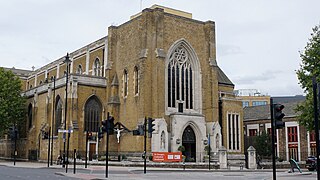
The Metropolitan Cathedral Church of St George, usually known as St George's Cathedral, Southwark, is the cathedral of the Roman Catholic Archdiocese of Southwark, south London, and is the seat of the Archbishop of Southwark.
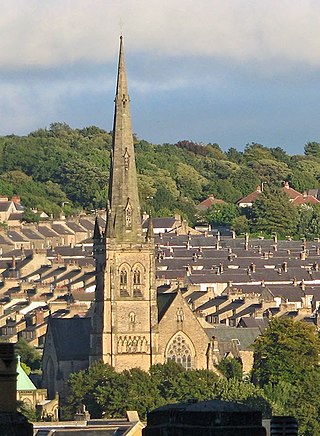
Lancaster Cathedral, also known as The Cathedral Church of St Peter and Saint Peter's Cathedral, is a Roman Catholic cathedral in Lancaster, Lancashire, England. It was a Roman Catholic parish church until 1924, when it was elevated to the status of a cathedral. It started as a mission church in 1798, and the present church was built on a different site in 1857–59. It was designed by E. G. Paley in the Gothic Revival style and is a grade II* listed building. In 1901 a baptistry was added by Austin and Paley, and the east end was reordered in 1995 by Francis Roberts. The cathedral is in active use, arranging services, concerts and other events, and is open to visitors.
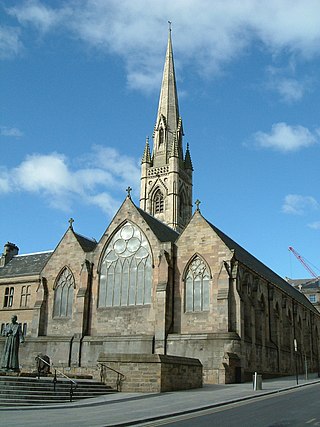
The Cathedral Church of St Mary is a Catholic cathedral in Newcastle upon Tyne, Tyne and Wear, England. It is the mother church of the Diocese of Hexham and Newcastle and seat of the Bishop of Hexham and Newcastle. The cathedral, situated on Clayton Street, was designed by Augustus Welby Pugin and built between 1842 and 1844. The cathedral is a grade I listed building and a fine example of the Gothic Revival style of architecture championed by Pugin.

The Metropolitan Cathedral Church and Basilica of Saint Chad is a Catholic cathedral in Birmingham, England. It is the mother church of the Archdiocese of Birmingham and is dedicated to Saint Chad of Mercia.
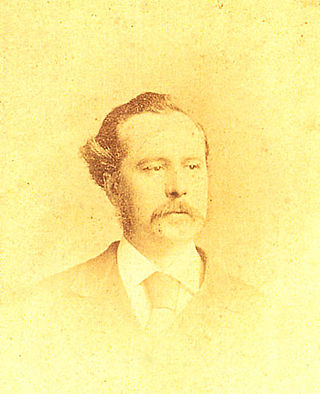
Edward Welby Pugin was an English architect, the eldest son of architect Augustus Welby Northmore Pugin and Louisa Barton and part of the Pugin & Pugin family of church architects. His father was an architect and designer of Neo-Gothic architecture, and after his death in 1852 Edward took up his successful practice. At the time of his own early death in 1875, Pugin had designed and completed more than one hundred Catholic churches.
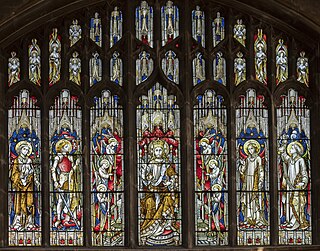
Hardman & Co., otherwise John Hardman Trading Co., Ltd., founded 1838, began manufacturing stained glass in 1844 and became one of the world's leading manufacturers of stained glass and ecclesiastical fittings. The business closed in 2008.

The Cathedral Church of St. John the Evangelist, usually known as Salford Cathedral, is a Catholic cathedral on Chapel Street in Salford, Greater Manchester, England. It is the seat of the Bishop of Salford and mother church of the Diocese of Salford, and is a Grade II* listed building.

The Cathedral of St Stephen is the heritage-listed cathedral church of the Roman Catholic Archdiocese of Brisbane and seat of its archbishop in Brisbane, Queensland, Australia. St Stephen's was only meant to serve as a temporary seat for the archbishop, and plans for a replacement were made with the Holy Name Cathedral, however the cathedral was never built.

The Cathedral Church of St Mary and St Thomas is a Roman Catholic cathedral in Northampton, England. It is the seat of the Bishop of Northampton and mother church of the Diocese of Northampton which covers the counties of Northamptonshire, Bedfordshire, Buckinghamshire and part of Berkshire north of the River Thames. The cathedral is situated in the north of the town, along the Barrack Road.

The Cathedral of the Immaculate Conception is a Roman Catholic church near the Mansion District in Albany, New York, United States. Built in the period of the 1848-1852, it is the mother church of the Diocese of Albany. In 1976 it was listed on the National Register of Historic Places.

St Alkmund's Church is an active Anglican parish church in Whitchurch, Shropshire, England. It stands at an elevated position in the centre of the town. The church is recorded in the National Heritage List for England which has designated it a Grade I listed building. It is in the diocese of Lichfield, the archdeaconry of Salop and the deanery of Wem and Whitchurch.

St. Giles' Church is a Roman Catholic church in the town of Cheadle, Staffordshire, England. The Grade I listed Gothic Revival church was designed by Augustus Welby Northmore Pugin. It has a spire height of 61m / 200 ft and is by far the tallest building in the town.

St. Peter and St. Paul Roman Catholic Church is a parish of the Roman Catholic Church in Newport, Shropshire, England. The parish covers Newport and the surrounding villages as far as Hinstock.

Cotton is a village and civil parish in Staffordshire, England. It is about 5 miles (8.0 km) north-east of Cheadle.

St Mary's Church is a redundant Anglican church in St Mary's Place, Shrewsbury, Shropshire, England. It is recorded in the National Heritage List for England as a designated Grade I listed building, and is under the care of the Churches Conservation Trust, the Trust designated St Mary's as its first Conservation Church in 2015. It is the largest church in Shrewsbury. Clifton-Taylor includes the church in his list of 'best' English parish churches.

St Francis of Assisi Church is a Roman Catholic Parish church in Birmingham. While the church is located between the Lozells and Hockley parts of the city, the parish covers most of Handsworth. It was founded in 1840, originally as a chapel in the nearby listed building, St. Mary's Convent designed by Augustus Pugin.

Margaret Agnes Rope was a British stained glass artist in the Arts and Crafts movement tradition active in the first four decades of the 20th century. Her work is notable for the intensity and skill of the painting and the religious fervour underpinning it. She should not be confused with her cousin, Margaret Edith Rope, another British stained glass artist in the same tradition, active from 1910 until the mid-1960s, with whom she cooperated on some windows.
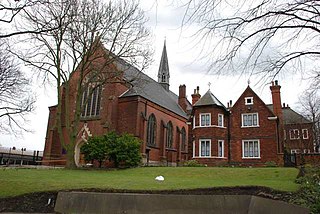
St Mary's Church or its full name St Mary on the Sea Church is a Roman Catholic Parish Church in Grimsby, Lincolnshire. It was built from 1880 to 1883. It is situated on the corner of Heneage Road and Wellington Street in the town centre. It was designed by Hadfield and Son and is a Grade II listed building.



























